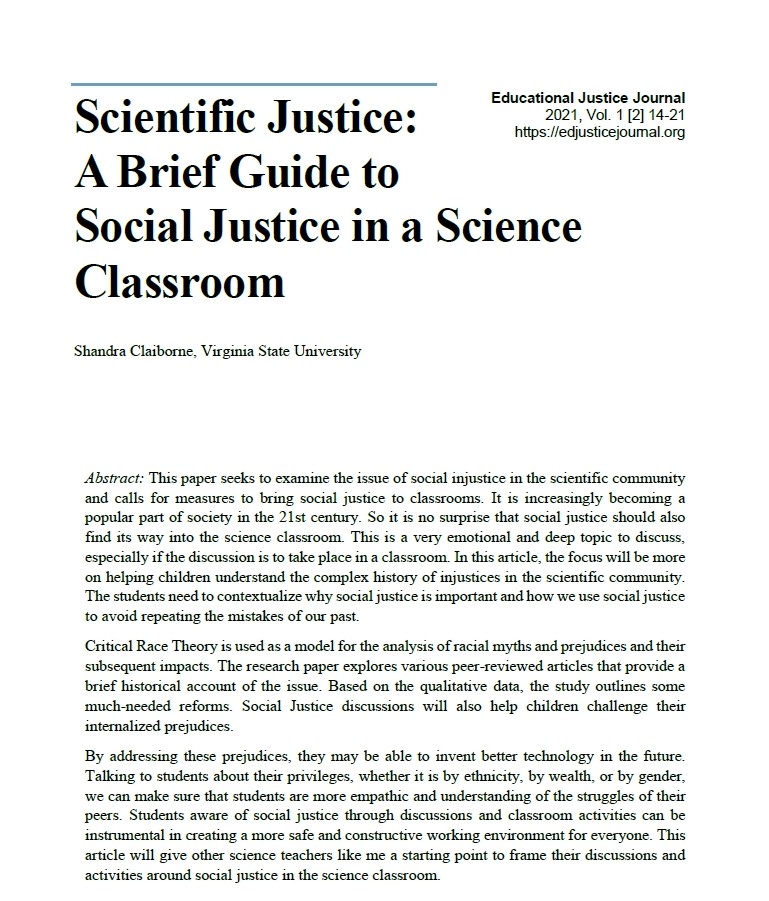This paper seeks to examine the issue of social injustice in the scientific community and calls for measures to bring social justice to classrooms. It is increasingly becoming a popular part of society in the 21st century. So it is no surprise that social justice should also find its way into the science classroom. This is a very emotional and deep topic to discuss, especially if the discussion is to take place in a classroom. In this article, the focus will be more on helping children understand the complex history of injustices in the scientific community. The students need to contextualize why social justice is important and how we use social justice to avoid repeating the mistakes of our past.
Critical Race Theory is used as a model for the analysis of racial myths and prejudices and their subsequent impacts. The research paper explores various peer-reviewed articles that provide a brief historical account of the issue. Based on the qualitative data, the study outlines some much-needed reforms. Social Justice discussions will also help children challenge their internalized prejudices.
By addressing these prejudices, they may be able to invent better technology in the future. Talking to students about their privileges, whether it is by ethnicity, by wealth, or by gender, we can make sure that students are more empathic and understanding of the struggles of their peers. Students aware of social justice through discussions and classroom activities can be instrumental in creating a more safe and constructive working environment for everyone. This article will give other science teachers like me a starting point to frame their discussions and activities around social justice in the science classroom.


